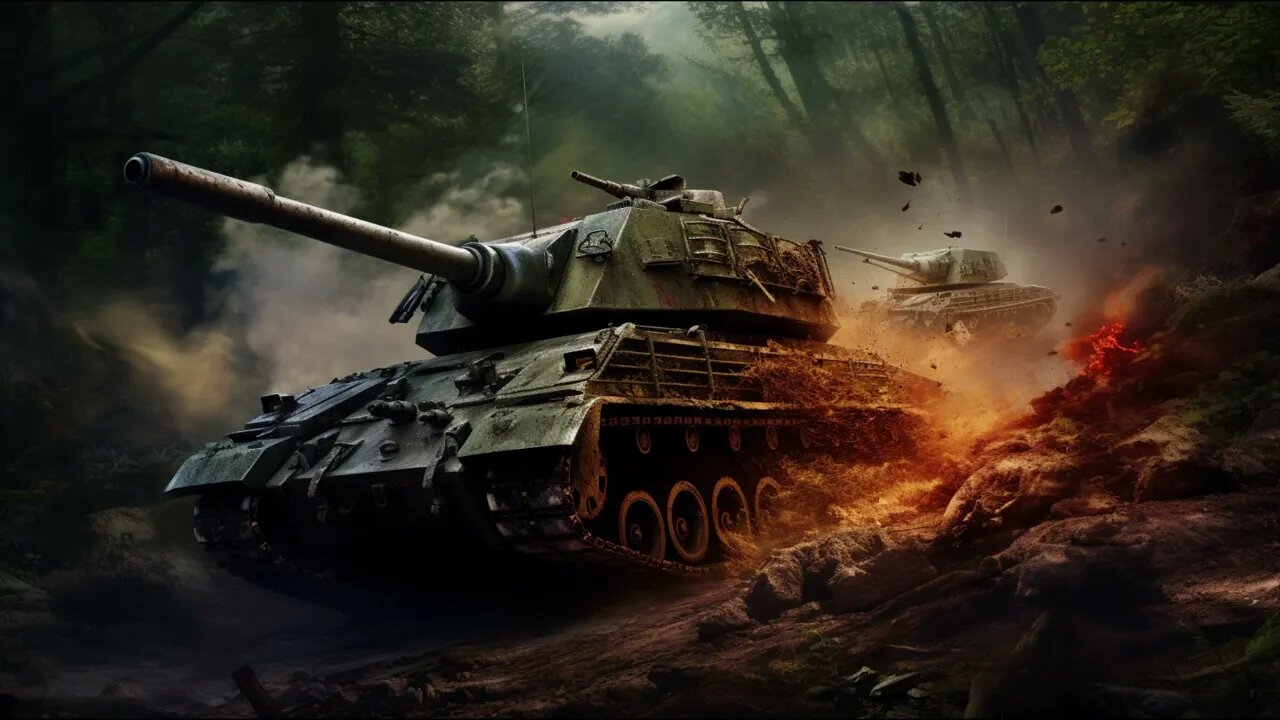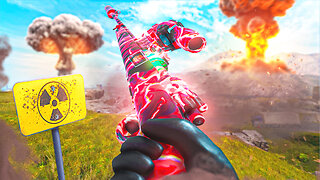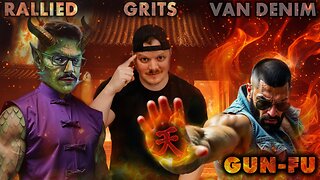Premium Only Content

Tiger Tank: The Iron Beast that Roared through World War II
Explore the awe-inspiring journey of the Tiger Tank, a formidable force in World War II. From its birth in the crucible of German engineering to its fearsome debut on the battlefield, follow its victories, challenges, and enduring legacy in the annals of armored warfare.
===============================
SUBSCRIBE TO THIS CHANNEL FOR MORE WORLD WAR STORIES:
https://www.youtube.com/@worldwarstory
===============================
TIMESTAMPS
0:29 - Development and Design
1:35 - Technical Specifications
2:34 - Combat Debut and Early Successes
3:11 - Challenges and Adaptation
3:45 - The Tiger II (King Tiger)
4:21 - Western Front and Normandy
4:42 - Late-War and the End of the Tiger
5:00 - Legacy and Influence
Tiger tank:
The Tiger tank, officially known as the "Panzerkampfwagen VI Tiger," was a fearsome and iconic tank used by Nazi Germany during World War II.
The Tiger tank was known for its formidable armor, heavy firepower, and significant impact on armored warfare during the war.
It was one of the heaviest tanks of its time, weighing approximately 57 tons, which contributed to its impressive protection and firepower.
The tank was armed with an 88 mm KwK 36 L/56 gun, which was highly effective against most Allied tanks, making it a feared adversary.
The Tiger tank's combat debut on the Eastern Front in late 1942 took the Soviet forces by surprise and contributed to the tank's early successes.
Development and design:
The development and design of the Tiger tank began in the early 1940s when German engineers recognized the need for a heavy tank capable of facing powerful Allied tanks.
The Tiger tank's design resulted from a competition between Henschel and Porsche, with Henschel emerging as the winner.
It featured a massive size, formidable armor, and an 88 mm KwK 36 L/56 gun, one of the most potent tank cannons of its time.
The tank was powered by a Maybach HL 210 engine, allowing it to reach a top speed of around 24 mph.
While its weight reduced its mobility, it provided impressive firepower and protection, making it a formidable presence on the battlefield.
Technical specifications:
The Tiger tank's technical specifications were crucial to its success and notoriety during World War II.
It was armed with an 88 mm KwK 36 L/56 gun capable of penetrating the armor of virtually any Allied tank at long ranges.
The tank featured heavy armor with up to 100 mm thickness on the front, making it nearly impervious to most Allied tank and anti-tank weaponry.
Operated by a crew of five, including a commander, gunner, loader, driver, and radio operator, the Tiger was a complex machine.
While not as maneuverable as lighter tanks, the Tiger's powerful engine and suspension allowed for relatively good mobility on the battlefield.
Combat debut and early successes:
The Tiger tank made its combat debut on the Eastern Front in late 1942 and took the Soviet forces by surprise.
Its superior firepower and armor allowed it to dominate the battlefield, and German tank aces like Michael Wittmann achieved legendary status using the Tiger.
The tank also saw action in North Africa, contributing to several German victories against British and Commonwealth forces.
While highly successful, the Tiger tank faced challenges due to its enormous size and fuel consumption.
As the war progressed, the Allies developed new tactics and weapons to counter the Tiger's threat.
Challenges and adaptations:
Despite its early successes, the Tiger tank faced challenges, including mechanical breakdowns due to its enormous size and weight.
Its high fuel consumption limited its operational range, which was a logistical challenge for German forces.
The cost and resources required to produce Tiger tanks were immense, straining Germany's war effort.
The Allies developed new tactics and weapons to counter the Tiger's threat as the war progressed.
The introduction of more advanced tanks like the Soviet IS-2 and American M26 Pershing posed significant challenges to the Tiger.
Disclaimer:
In our Bio https://www.youtube.com/@worldwarstory
#TigerTank #TheIronBeast #WWII
-
 0:31
0:31
World War Stories
1 year agoHarlem Hellfighters Valor and Resilience
117 -
 4:13:38
4:13:38
Akademiks
4 hours agoWar in RAT-LANTA. Young Thug vs Gunna vs Ralo vs YSL MONDO. Who Will Le Bebe Pick. FINAL CRASHOUT!
128K4 -
 21:55
21:55
MYLUNCHBREAK CHANNEL PAGE
1 day agoFault Lines are GATES - Pt 3
13.7K6 -

Sgt Wilky Plays
3 hours agoRumble Gaming Bad Company Presents WARZONEPALOOZA
8.22K -
 LIVE
LIVE
Rallied
2 hours ago $0.69 earnedSolo Challenges ALL DAY
100 watching -
 17:54
17:54
Nate The Lawyer
6 hours ago $1.88 earnedChicago Mayor’s $600M Migrant Spending Leaves City $1.1B Budget CRISIS.
13.1K25 -
 LIVE
LIVE
GritsGG
7 hours agoRumble Customs! 3515 Ws! 🫡!
186 watching -
 LIVE
LIVE
cosmicvandenim
16 hours agoVAN DENIM x RALLIED & GRITS | Team 6: Denim Grit | Warzonepalooza Tournament
225 watching -
 LIVE
LIVE
GamerGril
3 hours ago💕 The Evil Within 2 💕 | First Time Playthrough | Backseat Gaming Encouraged
70 watching -
 1:03:57
1:03:57
Jeff Ahern
3 hours ago $2.80 earnedThe Saturday show with Jeff Ahern
14.7K6